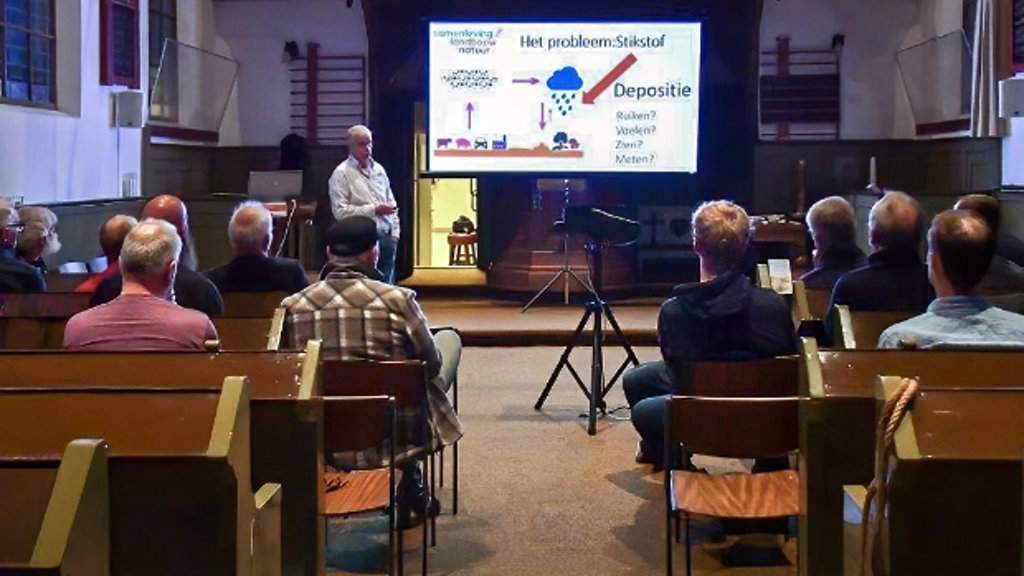During a Local Interest Skarsterbrêge media evening, Gerben de Vries and Henri Prince recently argued that Dutch nature is strongly recovering from the downward trend of the second half of the last century. They base their statement on their own research. The method used for this purpose was designed in 2008 by ecologists from the Ministry of Agriculture, Nature and Food Supply to monitor our valuable nature, but is not used to prove the policy. The Community, Agriculture and Nature Foundation states that this research calls into question national nitrogen policy.
There is almost no nitrogen effect in Rottige Meenthe and Brandemeer
De Vries: “Current nitrogen policy is based on the ERIUS model, which vaguely calculates where nitrogen emissions end up in the environment. These theoretical results are compared with the theoretical critical deposition value (KDW). It is assumed that nature would be at greater risk if the calculated deposition was higher From KDW It is a black box that has attracted a lot of scientific criticism. “We base our approach on practice,” adds Prince. “An example of this is the objective natural analysis of the Rottige Meenthe and Brandemeer. Model results indicate that seven of the nine identified habitats are at risk from nitrogen.” But practical analysis shows that only one of them shows any signs of nitrogen deposition damage and this more than 50 years after the critical D value was exceeded!
Due to neglect, observing nature is not possible
The European Union demands that the quality of the Natura 2000 areas does not deteriorate from 2003 onwards. However, the quality of nature has not been recorded in a structural and correct manner. As a result, it is no longer possible to reconstruct whether the Natura 2000 areas meet EU requirements. For the Rottige Meenthe, this means that it has been concluded that for almost the entire area degradation cannot be ruled out and that the nature goals therefore cannot be achieved unless further measures are taken to restore nature.
The already implemented policy, created on the basis of such conclusions, will cost 250 euros per Dutch family per month (!) over the next seven to ten years. This is without any guarantee that it will contribute to improving nature.
Or is there data available after all?
Although nature monitoring in Natura 2000 areas has seriously failed, the data are publicly available at the national level and are therefore available. In 2008, a group of species was identified that provides information about the state of nature. This concerns more than 500 species of plants and animals, and the analysis shows that at least 86% of them have remained stable or increased over the past 20 years. No species has disappeared. Some species have even returned after previously disappearing. This result indicates that things are going well for the vast majority of Natura 2000 areas and that the Netherlands probably meets European requirements well.
to guarantee
Representatives of local interests are deeply concerned about the consequences of nature and nitrogen policy. They fear that employment and social cohesion in their villages will be affected if livestock farming largely disappears. Dairy farms largely determine the nature of the landscape, culture and lifestyle of the village. The fear is that the loss of employment opportunities will lead to further depopulation of the countryside and an attack on the already meager facilities in the villages.
Solution directions
Various solutions emerge during the discussion. One of them is the idea of putting management and maintenance in the hands of local people. The goal is to transform a skeptical attitude towards large nature organizations into pride in their nature reserves. This would increase support, reduce costs, and offset job losses.
A proposal to reconsider the Natura 2000 policy also emerged. The size of the 162 Natura 2000 areas varies widely: from less than twenty to several tens of thousands of hectares. When allocating these areas, no consideration was given to the consequences that are now emerging and are putting the country in lockdown. A different classification could lead to a more effective nature policy. I can not? It could be! Nature will benefit.
One important solution is to reduce emissions through several recognized technical applications (more than 300). This means that it is possible to achieve a 50% reduction at a relatively low cost within a relatively short period of time.
Why the government chooses such polarizing and extreme measures, when practical, cheaper and more effective solutions are available, is still not entirely clear to visitors to this meeting in Skarsterbrigg Church.
Local interest Skarsterbrêge.

“Coffee buff. Twitter fanatic. Tv practitioner. Social media advocate. Pop culture ninja.”











More Stories
“Ask at least one question in return.”
According to research, people with this sleep rhythm live longer.
13 municipalities in the province of Seville have mosquitoes carrying the Nile virus